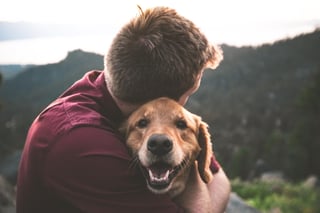Blog
See the latest content with helpful moving & storage posts and videos.
If your family includes any members with fur, feathers or scales, you want to make sure they have just as safe of a moving experience as everyone else. Use this advice to keep your pet safe before, during and after you move.

Before the move
As you look for a new home, you should make sure your pet will thrive in and around it. VetStreet pointed out a number of important considerations, from the presence or lack of fencing, proximity to busy roads and rules about certain breeds enforced by homeowners' associations. Make sure to keep your pet's needs in mind as you look for a new place to live
A good plan for moving with pets starts well before the truck arrives and professionals start loading your belongings. You'll have to transport your pet yourself, whether in your car or on a plane.
Make sure you give yourself time to get your pet used to a carrier or kennel, which especially important if you'll travel to your new home by air, as The New York Times pointed out. You should also acclimate pets like cats and dogs to car rides if you don't normally take such trips with your four-legged friends in tow.
During the move
Make sure to schedule stops for your pets to stretch, eat and relieve themselves if you're driving to your new home. You have much more control over the process when you're behind the wheel as opposed to taking a flight. That means more freedom as well as more responsibility.
Have food, water and dishes for both on hand, as well as a pet seatbelt or kennel to use while in transit. When it comes to air travel, the process is more tightly controlled by the carrier. You can learn more in our detailed guide to air travel with pets.
After you arrive at your new home
It can be tempting to let pets explore their new surroundings, and many will certainly want to. You'll want to keep pets safe from any potential dangers, however. That includes all sorts of uncommon but potential hazards like holes behind large appliances and antifreeze in toilets, Petfinder said.
You'll also want to keep them safe from all the activity that comes with movers carrying heavy items throughout the house. Find a room where you can give them access to food, water and a place to rest, then close the door. You can and should check on them regularly.
You should try to maintain as much of your old routine as possible after you move in. Put their belongings - beds, scratching posts, food bowls, litter boxes - in similar places, take them for walks and play with them at similar times and provide the same food and treats whenever possible.
While there will still be an adjustment period with the potential for accidents, anxiety and other concerns, you can make these feelings less intense and pervasive if you give your pets some sense of continuity - and, of course, plenty of love and attention in general.
